HRMT 301 Assignment 2: Analyzing Employee Engagement and Total Rewards
VerifiedAdded on 2022/08/29
|6
|801
|17
Homework Assignment
AI Summary
This assignment solution for HRMT 301 explores the relationship between pay and employee engagement, discussing how pay positively influences employee commitment. It delves into job evaluation methods, specifically the ranking method, explaining its effectiveness in analyzing job responsibilities and qualifications. The solution identifies Fortis Inc. as a company using the ranking method, providing a sample pay structure. Furthermore, it details the importance of each of the five components of total rewards: compensation, benefits, professional development, recognition, and work-life balance, highlighting their roles in attracting, motivating, and retaining employees. The solution incorporates in-text citations and a works cited page, fulfilling the assignment requirements.
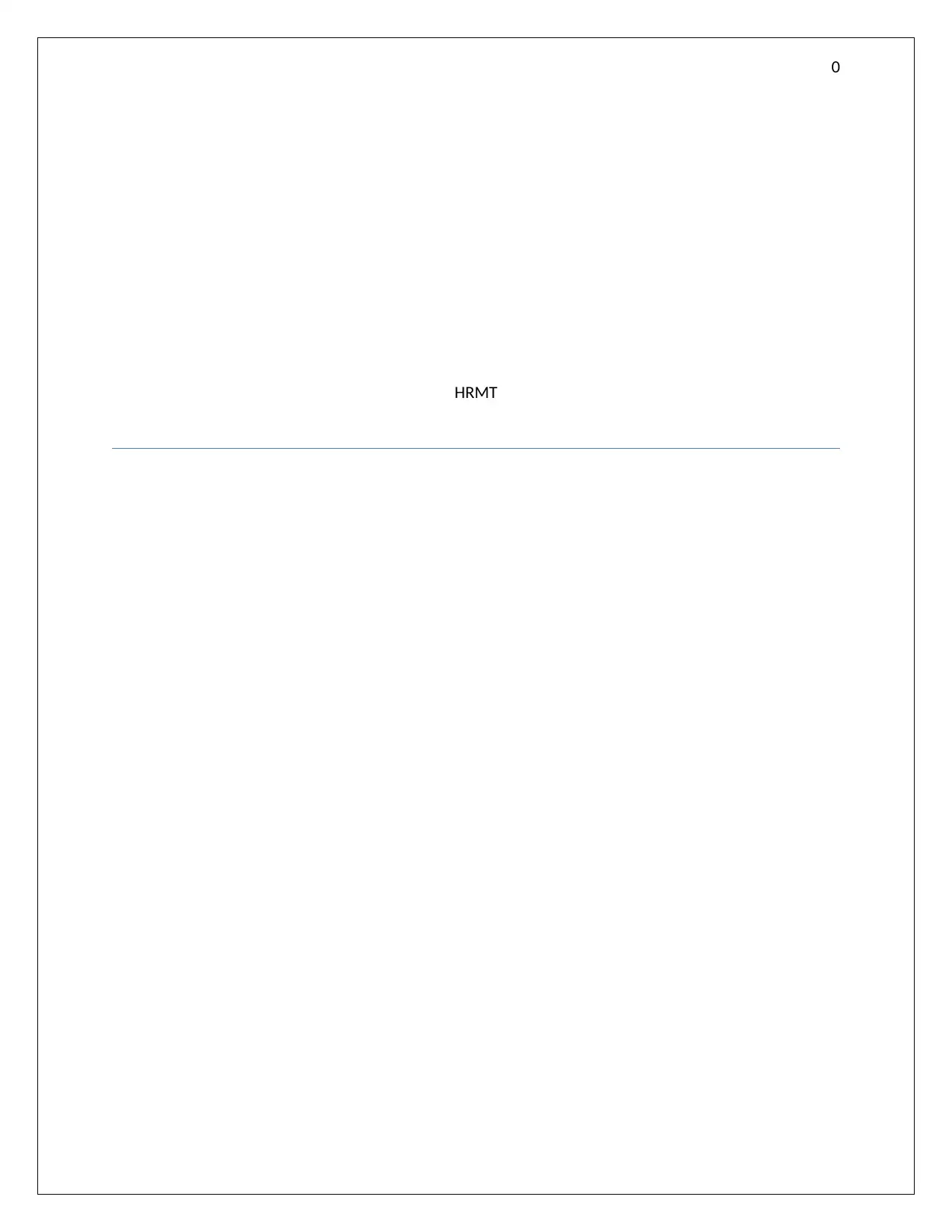
0
HRMT
HRMT
Paraphrase This Document
Need a fresh take? Get an instant paraphrase of this document with our AI Paraphraser
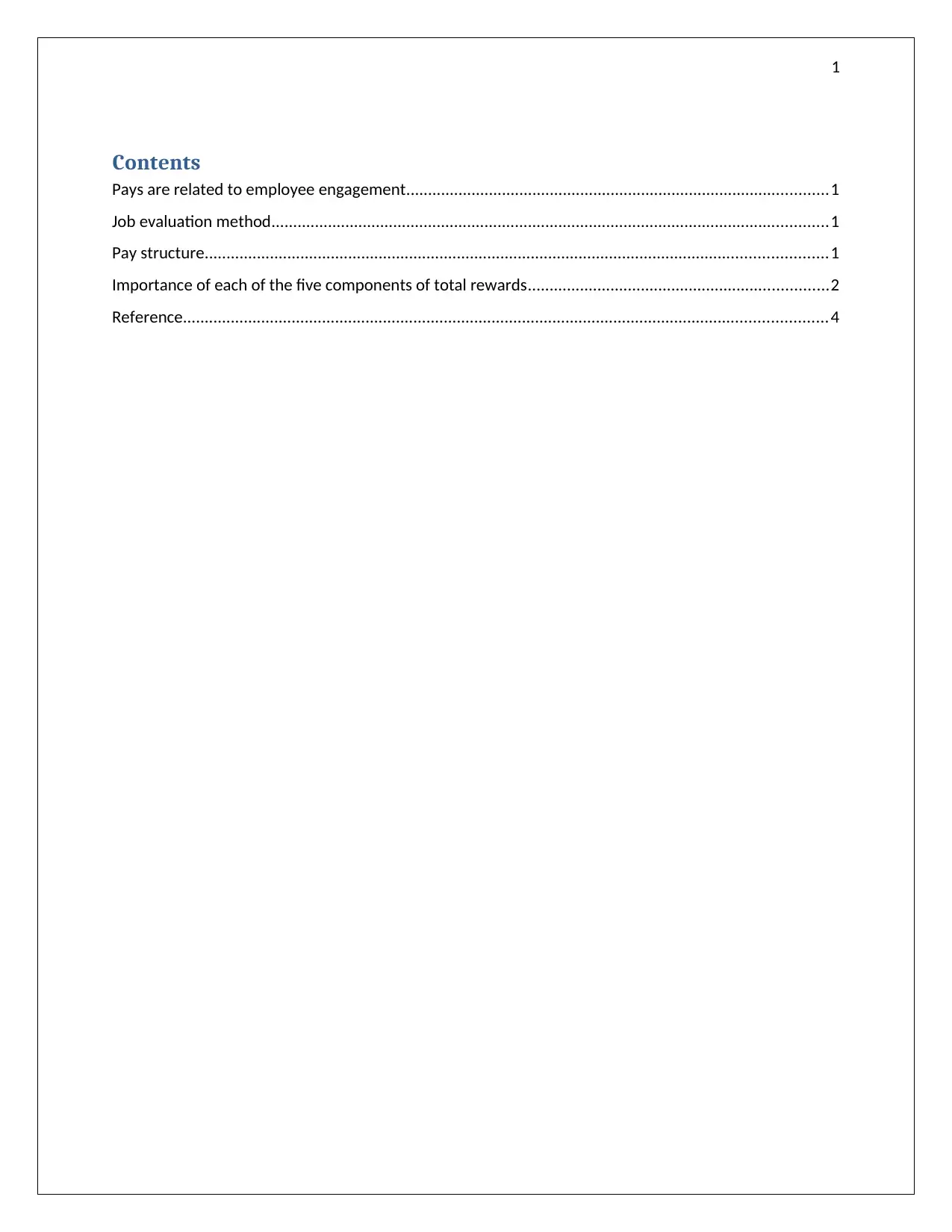
1
Contents
Pays are related to employee engagement.................................................................................................1
Job evaluation method................................................................................................................................1
Pay structure...............................................................................................................................................1
Importance of each of the five components of total rewards.....................................................................2
Reference....................................................................................................................................................4
Contents
Pays are related to employee engagement.................................................................................................1
Job evaluation method................................................................................................................................1
Pay structure...............................................................................................................................................1
Importance of each of the five components of total rewards.....................................................................2
Reference....................................................................................................................................................4
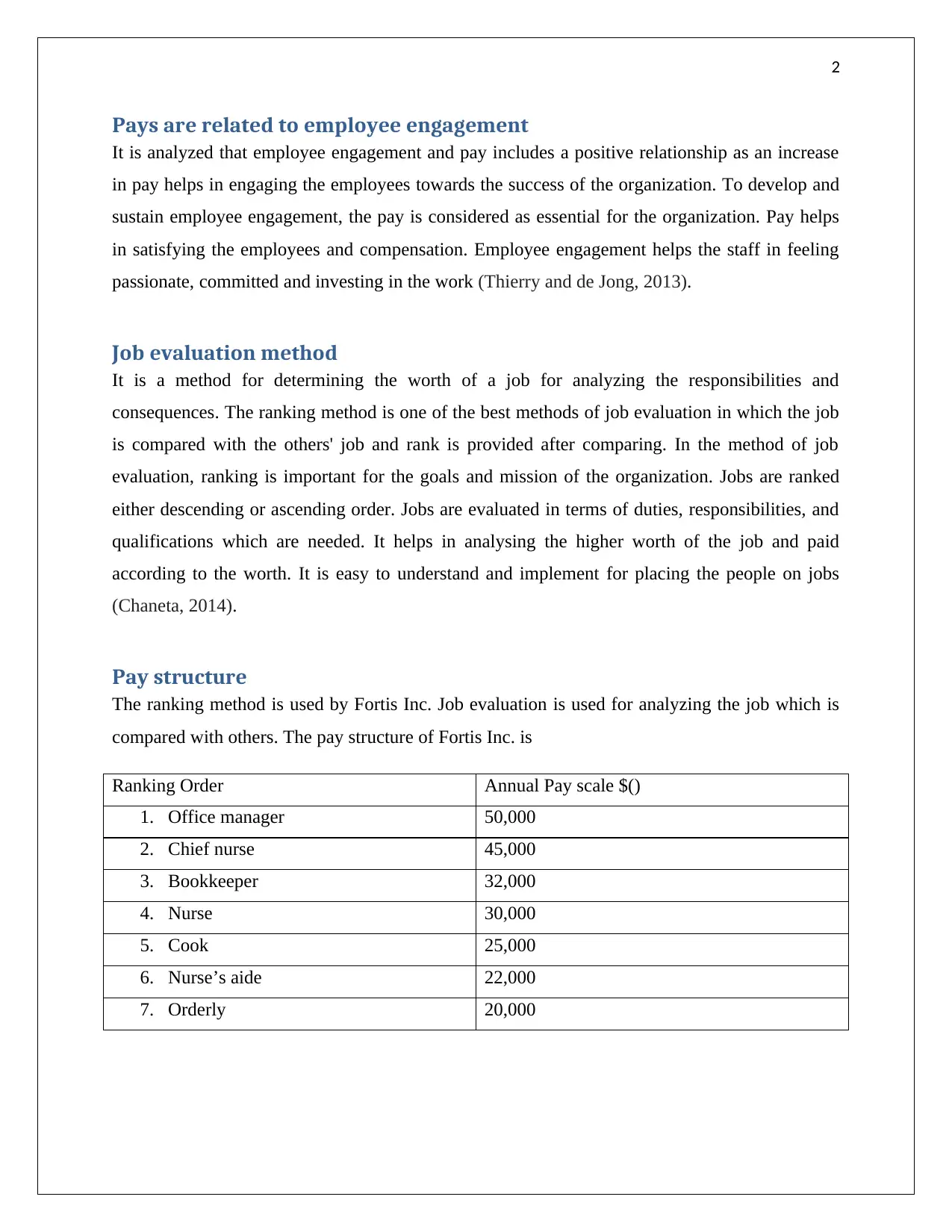
2
Pays are related to employee engagement
It is analyzed that employee engagement and pay includes a positive relationship as an increase
in pay helps in engaging the employees towards the success of the organization. To develop and
sustain employee engagement, the pay is considered as essential for the organization. Pay helps
in satisfying the employees and compensation. Employee engagement helps the staff in feeling
passionate, committed and investing in the work (Thierry and de Jong, 2013).
Job evaluation method
It is a method for determining the worth of a job for analyzing the responsibilities and
consequences. The ranking method is one of the best methods of job evaluation in which the job
is compared with the others' job and rank is provided after comparing. In the method of job
evaluation, ranking is important for the goals and mission of the organization. Jobs are ranked
either descending or ascending order. Jobs are evaluated in terms of duties, responsibilities, and
qualifications which are needed. It helps in analysing the higher worth of the job and paid
according to the worth. It is easy to understand and implement for placing the people on jobs
(Chaneta, 2014).
Pay structure
The ranking method is used by Fortis Inc. Job evaluation is used for analyzing the job which is
compared with others. The pay structure of Fortis Inc. is
Ranking Order Annual Pay scale $()
1. Office manager 50,000
2. Chief nurse 45,000
3. Bookkeeper 32,000
4. Nurse 30,000
5. Cook 25,000
6. Nurse’s aide 22,000
7. Orderly 20,000
Pays are related to employee engagement
It is analyzed that employee engagement and pay includes a positive relationship as an increase
in pay helps in engaging the employees towards the success of the organization. To develop and
sustain employee engagement, the pay is considered as essential for the organization. Pay helps
in satisfying the employees and compensation. Employee engagement helps the staff in feeling
passionate, committed and investing in the work (Thierry and de Jong, 2013).
Job evaluation method
It is a method for determining the worth of a job for analyzing the responsibilities and
consequences. The ranking method is one of the best methods of job evaluation in which the job
is compared with the others' job and rank is provided after comparing. In the method of job
evaluation, ranking is important for the goals and mission of the organization. Jobs are ranked
either descending or ascending order. Jobs are evaluated in terms of duties, responsibilities, and
qualifications which are needed. It helps in analysing the higher worth of the job and paid
according to the worth. It is easy to understand and implement for placing the people on jobs
(Chaneta, 2014).
Pay structure
The ranking method is used by Fortis Inc. Job evaluation is used for analyzing the job which is
compared with others. The pay structure of Fortis Inc. is
Ranking Order Annual Pay scale $()
1. Office manager 50,000
2. Chief nurse 45,000
3. Bookkeeper 32,000
4. Nurse 30,000
5. Cook 25,000
6. Nurse’s aide 22,000
7. Orderly 20,000
⊘ This is a preview!⊘
Do you want full access?
Subscribe today to unlock all pages.

Trusted by 1+ million students worldwide
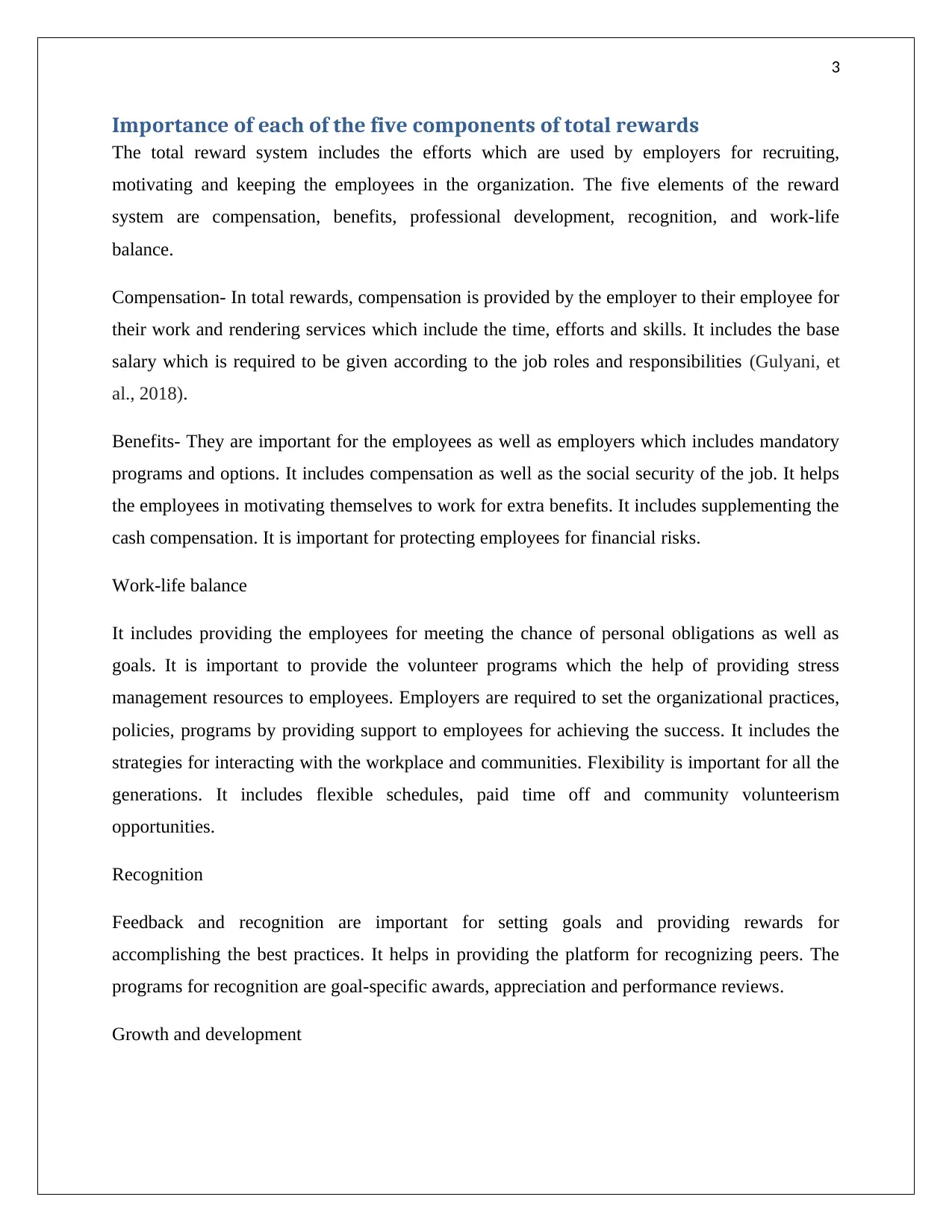
3
Importance of each of the five components of total rewards
The total reward system includes the efforts which are used by employers for recruiting,
motivating and keeping the employees in the organization. The five elements of the reward
system are compensation, benefits, professional development, recognition, and work-life
balance.
Compensation- In total rewards, compensation is provided by the employer to their employee for
their work and rendering services which include the time, efforts and skills. It includes the base
salary which is required to be given according to the job roles and responsibilities (Gulyani, et
al., 2018).
Benefits- They are important for the employees as well as employers which includes mandatory
programs and options. It includes compensation as well as the social security of the job. It helps
the employees in motivating themselves to work for extra benefits. It includes supplementing the
cash compensation. It is important for protecting employees for financial risks.
Work-life balance
It includes providing the employees for meeting the chance of personal obligations as well as
goals. It is important to provide the volunteer programs which the help of providing stress
management resources to employees. Employers are required to set the organizational practices,
policies, programs by providing support to employees for achieving the success. It includes the
strategies for interacting with the workplace and communities. Flexibility is important for all the
generations. It includes flexible schedules, paid time off and community volunteerism
opportunities.
Recognition
Feedback and recognition are important for setting goals and providing rewards for
accomplishing the best practices. It helps in providing the platform for recognizing peers. The
programs for recognition are goal-specific awards, appreciation and performance reviews.
Growth and development
Importance of each of the five components of total rewards
The total reward system includes the efforts which are used by employers for recruiting,
motivating and keeping the employees in the organization. The five elements of the reward
system are compensation, benefits, professional development, recognition, and work-life
balance.
Compensation- In total rewards, compensation is provided by the employer to their employee for
their work and rendering services which include the time, efforts and skills. It includes the base
salary which is required to be given according to the job roles and responsibilities (Gulyani, et
al., 2018).
Benefits- They are important for the employees as well as employers which includes mandatory
programs and options. It includes compensation as well as the social security of the job. It helps
the employees in motivating themselves to work for extra benefits. It includes supplementing the
cash compensation. It is important for protecting employees for financial risks.
Work-life balance
It includes providing the employees for meeting the chance of personal obligations as well as
goals. It is important to provide the volunteer programs which the help of providing stress
management resources to employees. Employers are required to set the organizational practices,
policies, programs by providing support to employees for achieving the success. It includes the
strategies for interacting with the workplace and communities. Flexibility is important for all the
generations. It includes flexible schedules, paid time off and community volunteerism
opportunities.
Recognition
Feedback and recognition are important for setting goals and providing rewards for
accomplishing the best practices. It helps in providing the platform for recognizing peers. The
programs for recognition are goal-specific awards, appreciation and performance reviews.
Growth and development
Paraphrase This Document
Need a fresh take? Get an instant paraphrase of this document with our AI Paraphraser
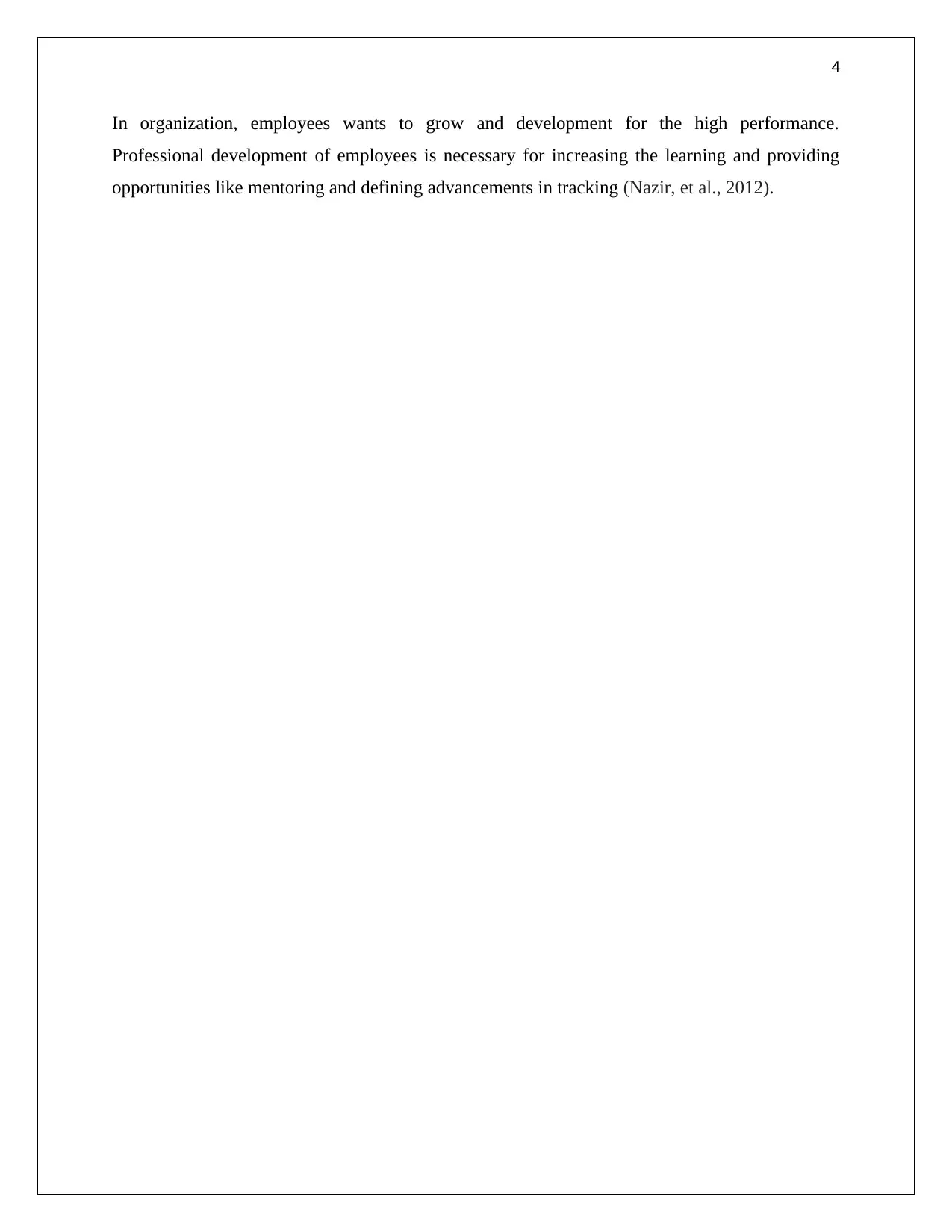
4
In organization, employees wants to grow and development for the high performance.
Professional development of employees is necessary for increasing the learning and providing
opportunities like mentoring and defining advancements in tracking (Nazir, et al., 2012).
In organization, employees wants to grow and development for the high performance.
Professional development of employees is necessary for increasing the learning and providing
opportunities like mentoring and defining advancements in tracking (Nazir, et al., 2012).
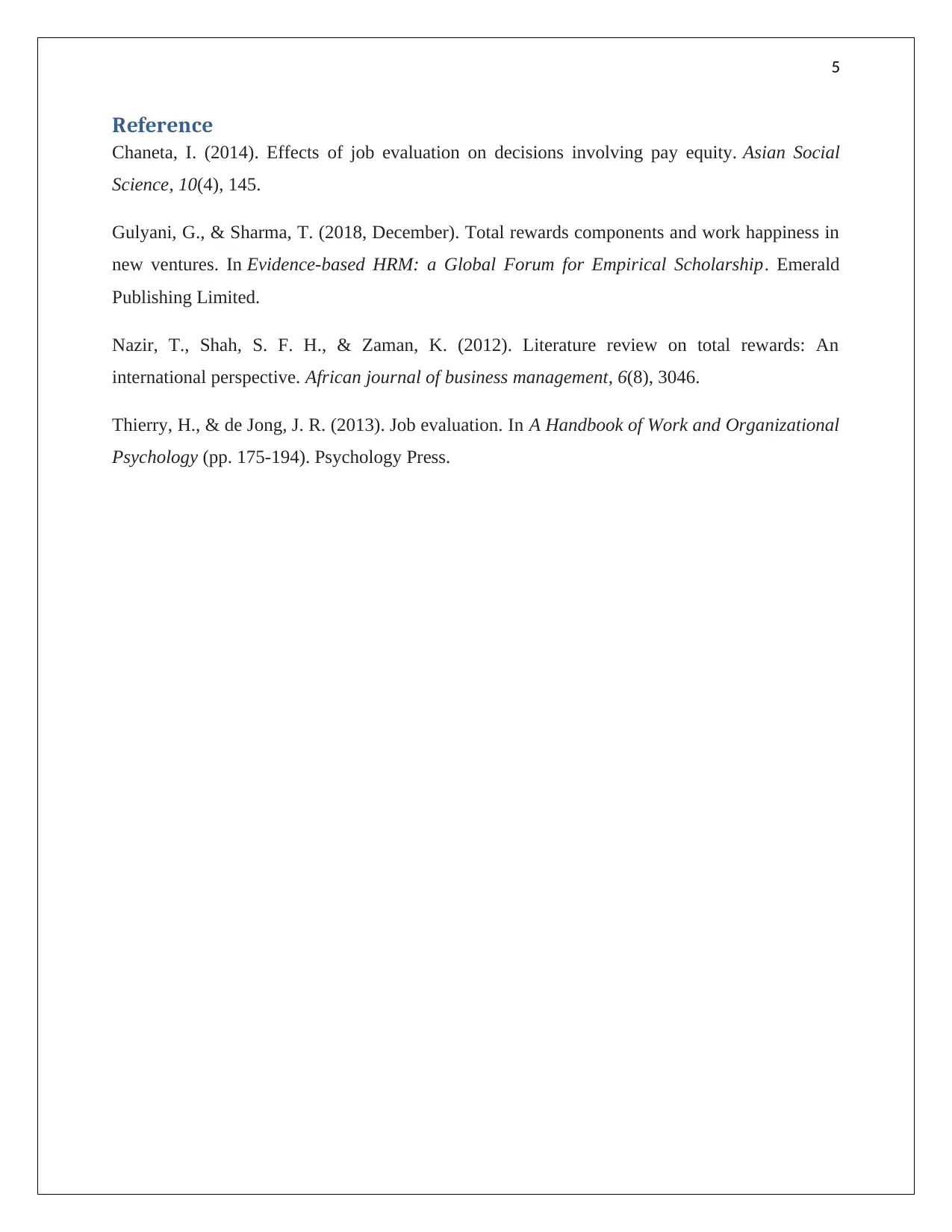
5
Reference
Chaneta, I. (2014). Effects of job evaluation on decisions involving pay equity. Asian Social
Science, 10(4), 145.
Gulyani, G., & Sharma, T. (2018, December). Total rewards components and work happiness in
new ventures. In Evidence-based HRM: a Global Forum for Empirical Scholarship. Emerald
Publishing Limited.
Nazir, T., Shah, S. F. H., & Zaman, K. (2012). Literature review on total rewards: An
international perspective. African journal of business management, 6(8), 3046.
Thierry, H., & de Jong, J. R. (2013). Job evaluation. In A Handbook of Work and Organizational
Psychology (pp. 175-194). Psychology Press.
Reference
Chaneta, I. (2014). Effects of job evaluation on decisions involving pay equity. Asian Social
Science, 10(4), 145.
Gulyani, G., & Sharma, T. (2018, December). Total rewards components and work happiness in
new ventures. In Evidence-based HRM: a Global Forum for Empirical Scholarship. Emerald
Publishing Limited.
Nazir, T., Shah, S. F. H., & Zaman, K. (2012). Literature review on total rewards: An
international perspective. African journal of business management, 6(8), 3046.
Thierry, H., & de Jong, J. R. (2013). Job evaluation. In A Handbook of Work and Organizational
Psychology (pp. 175-194). Psychology Press.
⊘ This is a preview!⊘
Do you want full access?
Subscribe today to unlock all pages.

Trusted by 1+ million students worldwide
1 out of 6
Related Documents
Your All-in-One AI-Powered Toolkit for Academic Success.
+13062052269
info@desklib.com
Available 24*7 on WhatsApp / Email
![[object Object]](/_next/static/media/star-bottom.7253800d.svg)
Unlock your academic potential
Copyright © 2020–2025 A2Z Services. All Rights Reserved. Developed and managed by ZUCOL.





